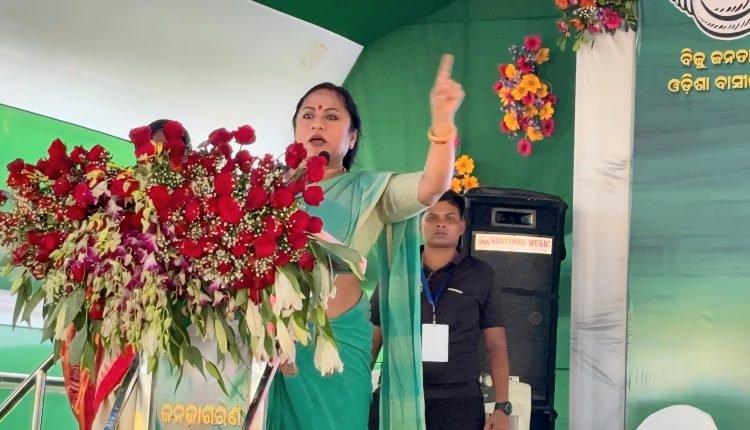The Biju Janata Dal (BJD) is grappling with rising internal dissent following growing discontent over the elevation of former BJP leader Lekhashree Samantsinghar within the party. Despite BJD chief Naveen Patnaik’s claims that V.K. Pandian has stepped back from the party’s leadership role, sources suggest that his influence over key decisions—including Samantsinghar’s rapid rise—remains dominant and controversial.
Women Leaders Voice Open Dissent at Party Meeting
At a closed-door meeting held at BJD headquarters on Thursday, interim leader Devi Prasad Mishra met with several senior women leaders to address the tensions surrounding Samantsinghar. According to sources, the women leaders openly criticised what they described as a “calibrated campaign” to promote Samantsinghar at the cost of long-standing members.
One participant reportedly questioned, “Why is so much focus being placed on Lekhashree while others are sidelined?” This sentiment reflects wider dissatisfaction among the party rank and file, particularly women leaders who feel increasingly marginalised.
Protests Organized by Pandian Draw Poor Turnout
In response to derogatory remarks made by Nilgiri MLA Santosh Khatua against Samantsinghar, V.K. Pandian initiated protests outside the Nilgiri sub-collector’s office on Friday. The demonstration was followed by official complaints to the Bhubaneswar police and the State Women’s Commission, with demands for Khatua’s arrest and a public apology.
However, the rallies witnessed a weak turnout, with notable absences of several senior women leaders, signalling internal reluctance to follow Pandian’s directives and growing discontent with his leadership style.
Party Morale Low After Electoral Setback and Leadership Gaps
The BJD is still recovering from its massive defeat in the February 2022 state elections, which ended its 24-year rule in Odisha. Since then, leaders have voiced frustration over the diminishing visibility of Naveen Patnaik, citing his advanced age and recent health issues as reasons for his withdrawal from active politics.
With Pandian now seen as the de facto decision-maker, many senior leaders feel sidelined and reduced to symbolic roles. They also lament the lack of space to raise pressing issues such as the surge in violence against women, which they claim is being overshadowed by the media focus on Samantsinghar.
Failure to Rebuild Party Base Fuels Discontent
Despite being the principal opposition in Odisha, the BJD has struggled to revive its grassroots network post-defeat. Many leaders blame the organisational vacuum on Pandian’s narrow circle of loyalists, including Pranab Prakash Das, and his emphasis on a few individuals instead of broad-based rebuilding.
Efforts to reconnect with disillusioned voters have been half-hearted, contributing to a growing sense of alienation among long-time party workers and leaders alike.
Patnaik’s Return Prompts Show of Strength by Pandian
With Naveen Patnaik returning to Bhubaneswar after a 20-day medical visit to Mumbai, the BJD is planning a grand welcome at the airport. Pandian and Santript Mishra are expected to accompany him, a move interpreted by insiders as evidence of Pandian’s continued influence over the party machinery.
The event is expected to draw thousands, but critics within the party view it as a carefully staged display of control rather than genuine mass mobilisation.
Leadership Crisis Looms Over BJD’s Future in Opposition
As internal rifts deepen, the BJD’s ability to present a united and credible opposition to the BJP-led government appears increasingly uncertain. The ongoing controversy surrounding Samantsinghar’s elevation, and Pandian’s backstage control, has exposed fractures in leadership and strategy.
With mounting disillusionment among core party members, particularly women, the BJD faces the pressing challenge of redefining its identity and regaining its political foothold in Odisha.



Comments are closed.